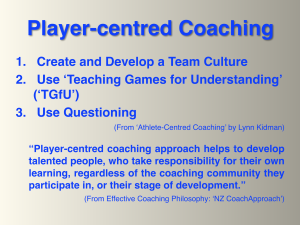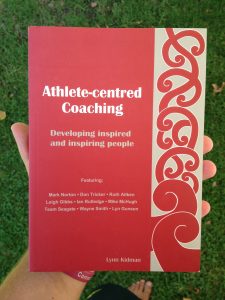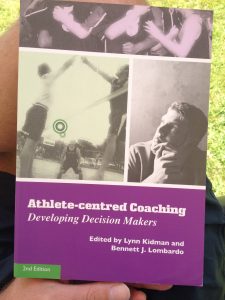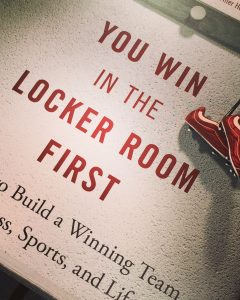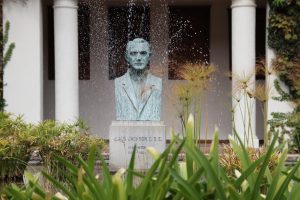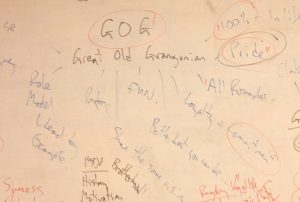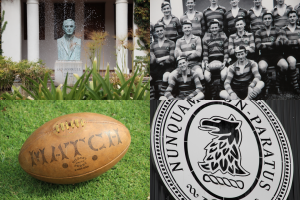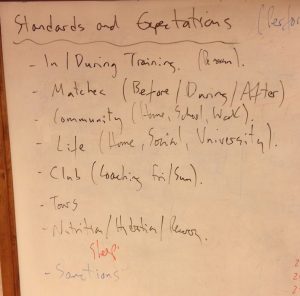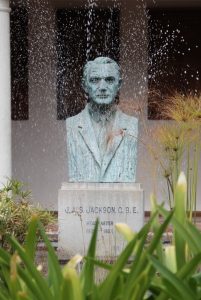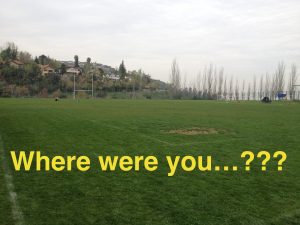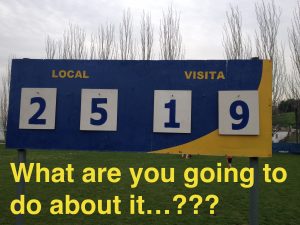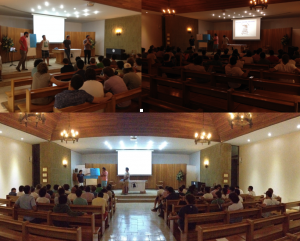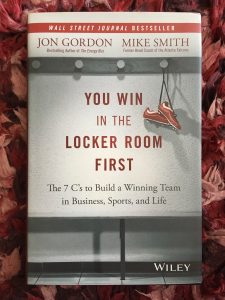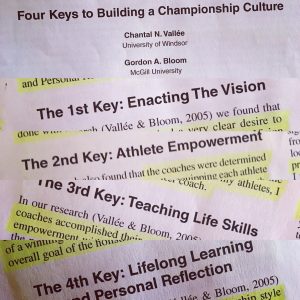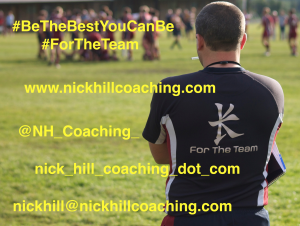How to build a Team Culture…
First up I will share with you where building a Team Culture fits within the Player-centred Coaching Philosophy/Approach…
Some key components of an Athlete-centred Approach: “…establishing a quality team culture (wairua).” (p.18 Athlete-centred Coaching by Lynn Kidman, 2005).
What is Culture…?
I will share with you various definitions of what Culture means in a sporting context…
From Lynn Kidman’s: Athlete-centred coaching (2005)
“According to Thompson (2003), team culture consists of values, (explicit and congruent), rituals, shared vocabularies, two-way communication, and a feeling of family.” (p.150)
These books have had a major impact on affirming that I have been on the right Coaching Philosophy crusade, especially since 2009 when I have been applying Player-centred Coaching principles 100%. How I coach today is very different to the way I coached when I first started on this crusade in 1999. I have moved all the way along the coaching continuum from Coach-centred Coaching to Player-centred Coaching and I would never slide back to the other end of the continuum now. I highly recommend that coaches read these two books.
“…success happens by focusing on the process, not the outcome. You win by cultivating the right culture, leadership, expectations, beliefs, mindset, relationships, and habits before you even play the game. You win in the locker room first. Then you win on the field.”
“You must spend more time on building your culture than on anything else. Culture is what produces wins over time.”
In April 2013 I moved to Chile for a new challenge in a different country and in a completely different culture as Director of Rugby at The Grange School in Santiago. Over time I became one of the coaches of the Old Boys team in the Old Grangonian Club (which is a private members only club and you have had to have gone to The Grange School as a student to become a member and play for the team).
I soon realised straight off the plane that I had walked into a Coach-centred Coaching Culture. The complete opposite end to where I was now coaching, which is true Player-centred Coaching approach/philosophy, that had come to great fruition as Director of Rugby at Denstone College (UK) as you have just read.
With this being an adult team it meant that I had to tweak a couple of things in my approach due to external factors, e.g. some of the players worked full-time and none of the players had ever done anything like this before as they were always told what to do all of the time, aka a Coach- centred Coaching Culture. Despite this foreign approach for these players I still applied the same Player-centred Coaching principles and approach.
Having been in the school for a couple of years and in and around the Community during this time I soon worked out many factors about the Culture within the School, the Club and the Community, as well as the native Chilean Culture which alone brings its own frustrations, challenges and uniqueness.
I discovered that a unique combination of John Jackson (the founder of The Grange School in 1928), playing Rugby, the Griffin (i.e. the commonality in the Club’s and School’s badges) and being a part of a Generation (i.e. their year group like a family) were the 4 cornerstones of their culture. I delved into this emotional resource many times throughout the season because it gave the players an amazing feeing inside their bodies because of the deep and meaningful connections and affinity they had to these 4 cornerstones.
One of which was the fact that the players had spent 14 years of their lives in The Grange School from 5 years old to 18 years old. With the main demographic of the playing squad aged 19 to 25, this meant they had basically spent the whole of their lives so far in the school. This also helped because I had already coached a good chunk of players in the club for a couple of years when they were in the school, so I had already built up a rapport and relationships with these young adult players.
Discussing this new approach for them with the Head Coach, I said we should all meet at the John Jackson statue inside the school at the very beginning of the process because of the deep meaning it has to all the players in the squad and that it would evoke raw emotions inside them because of their long time in the school and their affinity to the school…
Before this we decided who should be in the Leadership Group of the team because if they didn’t believe in our new Philosophy and approach then it would be dead in the water before we even began! The first meeting we had was with a legend in the club who had played for the National team many times, had been abroad to play and was their Captain. He was a hero to the younger players and someone who they looked up to and respected. He was on board from the get go which was a crucial cog in the wheel to have in place. So having read Richie McCaw’s autobiography where he shared the acronym GAB which stands for Great All Black. I created the acronym GOG which stands for Great Old Grangonian.
We included a mix of players in this group, from young guys who had just left the school to old guys who had been in the club for 40 odd years, board members who were still playing because as coaches we weren’t allowed to go to their board meetings, from on-field leaders that would lead from the front in battle to off-field leaders who were great role models and everyone in the Community looked up to them and were inspired by them.
We then called our 1st GOG meeting with all the members we had identified… First up I asked them what do they think GOG means…? What does it stand for…?
I then shared with the group 4 different pictures…
After this meeting the players went away in their mini-groups to define exactly what each area meant having discussed it all together and getting peoples’ senses and thoughts on each area. This would mean they were prepared and in a great position to facilitate the minj-groups that we would create on the Goal Setting evening a week later.
Then it was time for everyone to get together to set the wheels in motion for the whole squad…
After the Head Coach gave the introduction to the process and a few inspirational words to the group… I then shared some words of inspirations and encouragement and then challenged them to look John Jackson in the eye and ask themselves are you up for the challenge to become the best you can be…?!
The meaning of this photo is that this is the pitch where the 2014 Play-off game for relegation was played. Old Boys have never been relegated in the history of the Club. Basically I wanted to hit a nerve! Were you on the pitch putting your body on the line…?! Were you on the sideline of the pitch supporting the guys playing on the pitch..?! Or were you sat on your arse at home, on a beach or up in the mountains…?!!!
The meaning of this photo is that this is how close Old Boys came to being relegated from the top division. This was the ‘Critical Turning Point’. I wanted to bring up deep emotions inside to connect to the fact that they wouldn’t let this situation happen again and they would do everything in their powers to ensure that that would be the case.
After the video finished we then created mini-groups for each ‘Standard & Expectation’, which included the respective GOG and a mix of players from different generations, that would go offand discuss/write their thoughts and ideas about their area…
At the end of the process with each group having presented their area, the players then signed their commitment to their ‘Standards & Expectations’ if they agreed it what was said and were prepared to commit to the cause 100%.
These foundations saw the 2nd XV reach the final ending up as runners-up where in the previous season they didn’t exist, the 1st XV reached the Top 4 semi-finals losing out heavily to COBS, an average of 51 players trained every Tuesday and Thursday night throughout the season where in the previous season it was only 25 players on average, with the highest number of players at a training session being 74, and we put out a Gryphons XV, i.e. a 3rd XV, on numerous weekends as well.
Then in 2016, the 2nd XV lost in the semi-final to University of Catholica and the 1st XV lost to Troncos by 1 point in the semi-final. Then in 2017 the 2nd XV lost in the final again and the 1st XV won the National Championship.
As you can see, the process that I started in 2015 with the GOGs and all the players laid the foundations for the future ahead and played a key part in the future successes of the club. Empowering the GOGs to take ownership of their Team Culture to set the standards and expectations as to what it was going to take for the team was an instrumental part of this process. Here I tapped into the Chilean Culture because of the way the younger people in their society respect their elders and will do what they’ve been told to do. This is ingrained deeply in their brains from a very young age because of the teaching style they are exposed to for 14 years in the school, which is very much Command Style and Rote Learning of do this… do that… copy this… copy that…
Another key part of the process with Old Boys is the fact that I had started this process with the younger players from 2013 onwards in the School. So they were used to my approach once they transferred across to the Club because they had experienced Player-centred Coaching for 1, 2, 3, or 4 years respectively, and being asked what their opinions were to shape, grow and build their Team Culture.
Also, applying what I did during my time at Denstone College where I invited the leaders within the U15 team to the 1st XV Pre-season Training Camp to learn the process of what it took to be the best you can be… The youngest member of the GOG group was the 2015 School’s 1st XV Captain who actually hadn’t officially become part of the Old Boys team yet as he had one more year left in the school.
I share my Old Boys journey here on my website… http://nickhillcoaching.com/?page_id=1253
“Build Your Culture Up and Down: …culture is defined and created from the top down, but it comes to life from the bottom up. This meant that I had to build our culture by working with the leadership group (i.e. the owner, general manager, and executives), the coaching staff, and the football team. To strengthen the culture among the leadership group, it was important to reiterate to the owner, team president, and general manager the shared beliefs, values and expectations that we had discussed in depth when I was interviewing for the head coach position. It was important to have collaborative conversations on a regular basis to discuss the changes we were making and why we were making them.” (p.4)
“Everyone Creates Your Culture: Culture consists of the shared purpose, attitudes, vales, goals, practices, behaviours, and habits that define a team or organisation. Many coaches focus only on the culture shared by the players, but the fact is that everyone in an organisation shapes the culture. To be successful, you need everyone in your organisation thinking, believing, talking, and behaving in sync. You need everyone to be aligned with the same beliefs, expectations, behaviour, and habits.” (p.6)
What does the research say on building great cultures within teams…?
Being a member of the International Sports Coaching Journal I have access to some great research articles on Culture. Then being a member in Vern Gambetta’s GAIN (Gambetta Athlete Improvement Network) Professional Network I have been able to learn from, connect with, and share articles on Culture with Wade Gilbert, Professor of Sports Coaching and Psychology at Fresno State University in California and GAIN Faculty Member. Plus Xavier Roy from Montreal, Canada, who is a GAIN member, who is currently working on his PhD and so has access to all the journals. So if I see a link or photo on Twitter, or read a research article and I want to read one of the referenced articles, I message him and he sends me over the articles I am seeking.
Here I share some findings from 4 excellent articles on building Team Culture…
Four Keys to Building a Championship Culture (Vallée & Bloom, 2016)
- Enacting the Vision;
- Athlete Empowerment;
- Teaching Life Skills;
- Lifelong Learning and Personal Reflection.
Here is the Summary and Recommendations…
- 3 types of coaching knowledge: Professional (Physical, Technical, Tactical and Psychological), Interpersonal (Trusting relationships) and Intrapersonal (Regular communication);
- Adapt to your environment;
- The importance of having a Vision;
- The value and importance of writing the Vision down;
- Sticking to the Plan;
- The adoption of a transformational leadership approach (Empowerment);
- Coach reflective learning and coach mentoring.
A Case Study of Excellence in Elite Sport: Motivational Climate in a World Champion Team (Ken Hodge, Graham Henry & Wayne Smith, 2014)
The New Zealand All Blacks are one of the most successful teams in world sport for more than 100 years. From 1903 to the end of 2011 they have a 75% Win %. From 2004 to 2011 they have a 85% Win %. They have been raked No.1 for 341 weeks since the rankings were introduced in 2003.
- Critical Turning Point;
- Flexible and Evolving;
- Dual-Management Model;
- “Better People Make Better All Blacks”;
- Responsibility;
- Leadership;
- Expectation of Excellence;
- Team Cohesion.
The key findings regarding the role of motivational climate in elite teams were:-
- The importance of the coach as the creator of the motivational climate and the preference for a supportive mastery climate;
- Players preferred positive feedback and democratic coaching behaviours;
- Strong mastery climates were associated with players reporting greater performance improvements and satisfaction with performance;
- To reduce player perceptions of distress, coaches should focus on creating a mastery climate for elite athletes.
2007 Rugby World Cup: Lost when favourites
2011 Rugby World Cup: Winners
2015 Rugby World Cup: Winners
Closing thought…
I will end this article by sharing a few insights from the Philadelphia Eagles’ Super Bowl LII victory… where their star quarterback Carson Wentz tore his ACL in the victory against the LA Rams in week 14 out of 17 of the Regular Season. This then saw back-up quarterback Nick Foles take the hot seat now and the crucial role of leading the Eagles into the Playoffs and all the way to the ultimate prize. The Eagles’ destiny could have all but ended with their prized asset struck down when he was in prime form and the Eagles flying high on route to the Playoffs. But it didn’t and a crucial part of the coaching process ensured that the Eagles weren’t derailed and went all the way to take on and beat the mighty Patriots with Tom Brady at the helm in the Super Bowl.
I am very lucky that through Vern Gambetta’s GAIN Professional Network I have been privileged to get to know Josh Hingst who is the Head Strength and Conditioning Coach for the Eagles. Over the last 12 months we have Skyped/FaceTimed on a regular basis and when Josh was in town for the Leaders in Sport Summit in London I caught the train down to London and met up with Josh for dinner during his flying visit to the UK.
We would regularly share thoughts & ideas and discuss various Player-centred Coaching principles. Based on my conversations with Josh I knew they were in a great position to succeed this season. As I tracked their results during the season from afar I knew they were on the right path. Then when Carson got injured and Nick took the helm I knew they were in great shape to support the back-up quarterback. As the drama unfolded in the Super Bowl I had the feeling they were going to win… and low and behold they did win. Not only did they win the Super Bowl, they beat the most successful organisation in the modern era 41-33.
Back in April, with it still not really sunk in a few months later, I asked Josh what were the key components to your success…?
Here are the answers he gave me…
- The athlete’s belief in themselves;
- Confidence amongst the team;
- They were not going to be denied;
- The underlying preparations…;
- The humility of the players;
- Doing their role in the team;
- Using a Player-centred Approach;
- Empowering the leaders on the team;
- Players that had already been in the Playoffs sharing their previous experiences, i.e. Peer-to-Peer coaching;
- “An individual can make a difference. A team can make a miracle” was a key quote given by the Head Coach during the Playoffs.
Feel free to get in touch with me with questions you’d like answering or a particular topic you’d like to know more about…
I plan to write a weekly article every Sunday evening…
If I don’t receive any recommendations during each week then I’ll pick a topic or an experience to write about to share with you that I hope will help you on your Coaching Journey as one person teachers, two people learn…


